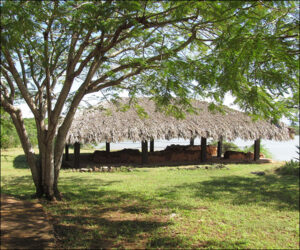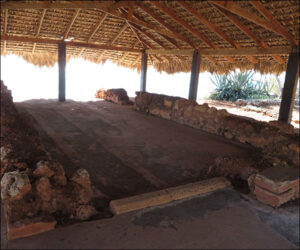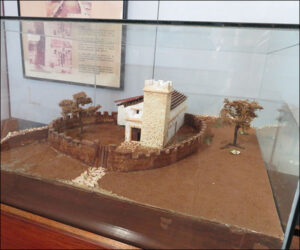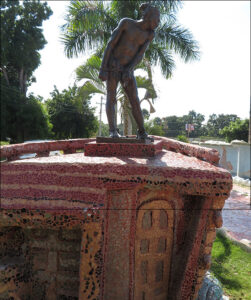After his capture in March 1495 (post of March 17), Chief Caonabó was shackled in a partitioned portion of Columbus’s residence at Isabela. The first three photos show the preserved ruins of the residence (the thatched roof is modern), the residence’s main floor layout without partition (approximately 39 x 18 feet), and a model of the residence within its fortified compound exhibited in Isabela’s Museum.



As related in Columbus and Caonabó, the two men lived in this proximity for almost a year, commencing soon after the abduction through their departure together for Spain on March 10, 1496 (although Columbus often was elsewhere on “Española”). During this period, Columbus regularly sought Caonabó’s submission to Queen Isabella and King Ferdinand’s rule, which Caonabó steadfastly refused. Columbus shied from executing Caonabó, fearing that would trigger more war and believing Isabella and Ferdinand preferred such a decision reserved for themselves. But Columbus was hopeful Caonabó eventually would submit if hauled before them in Spain.
In his letter of October 15, 1495, Columbus assured Isabella and Ferdinand that Caonabó would “tell everything about this land better than anyone, because there is no kind of thing he does not know about,” and Columbus and Caonabó depicts a number of conversations referred to in primary sources that the two men had while living together. Among other topics, Caonabó tried to trick Columbus to send soldiers into ambush in Maguana, Columbus sought Caonabó’s confession to massacring the garrison of sailors left on Española after the Santa María sank during the first voyage, and the two men discussed the soul’s afterlife recognized by their respective religions.
The last photo is the statue in San Juan de la Maguana (Dominican Republic) showing Caonabó chained aboard ship when the two men departed for Spain in 1496.

